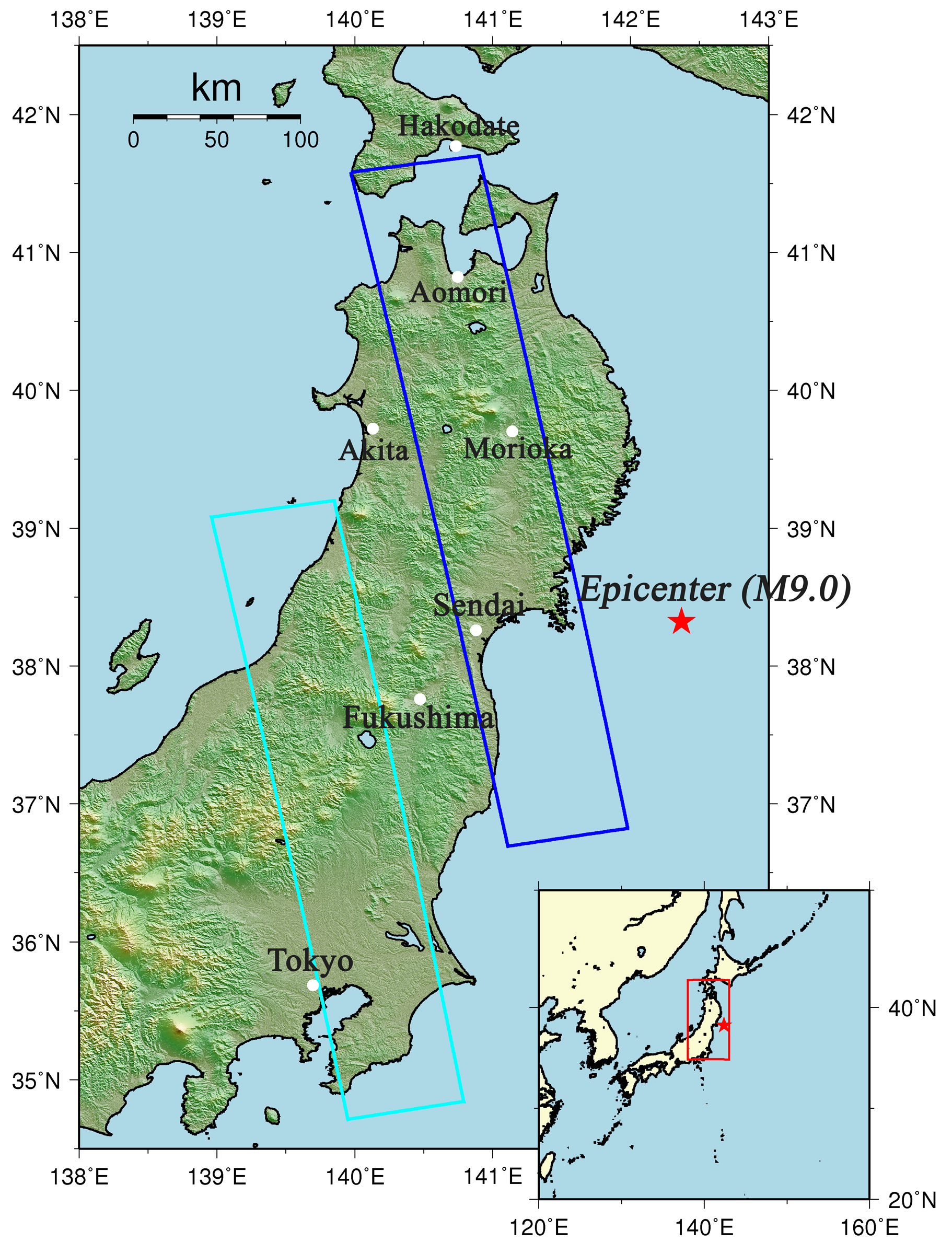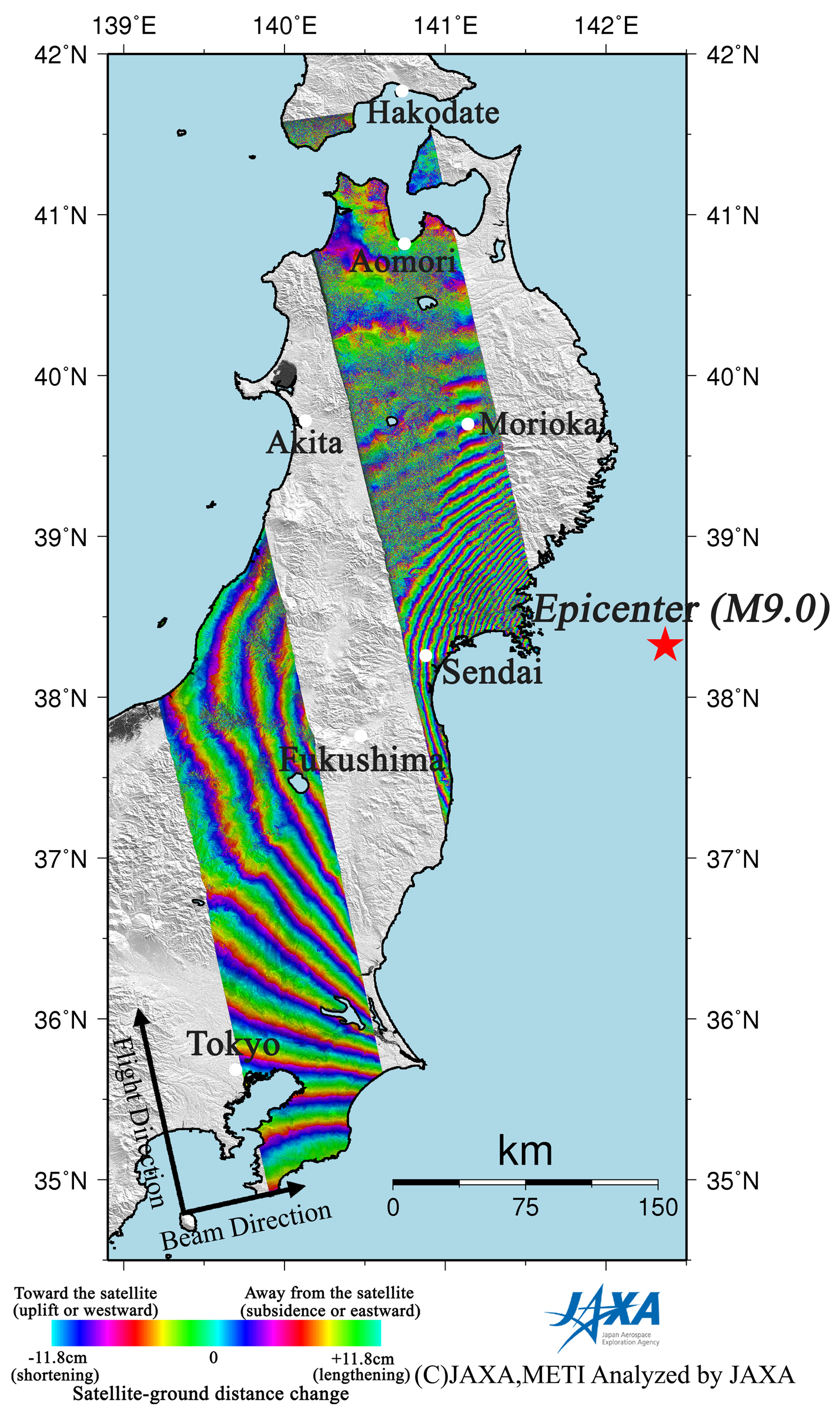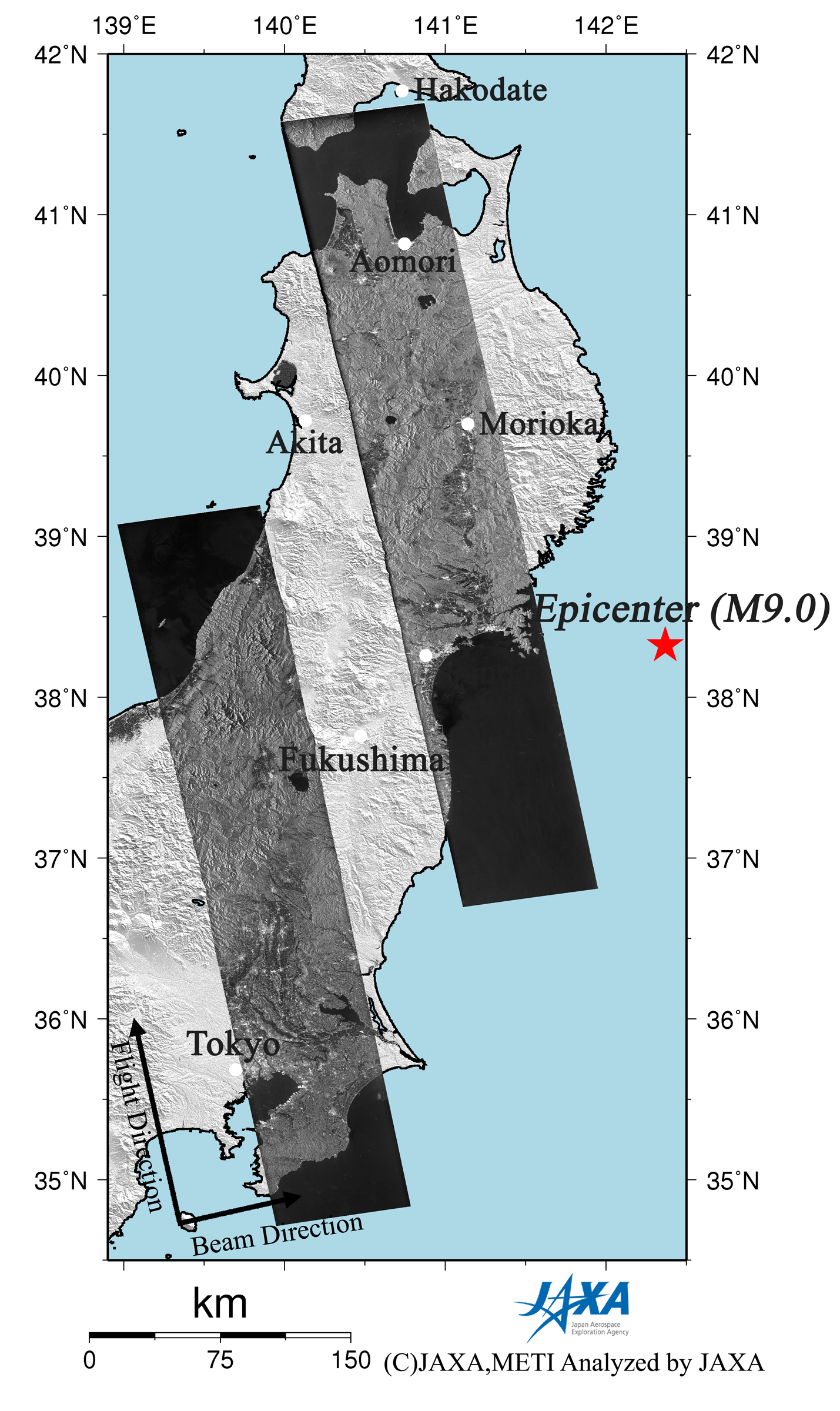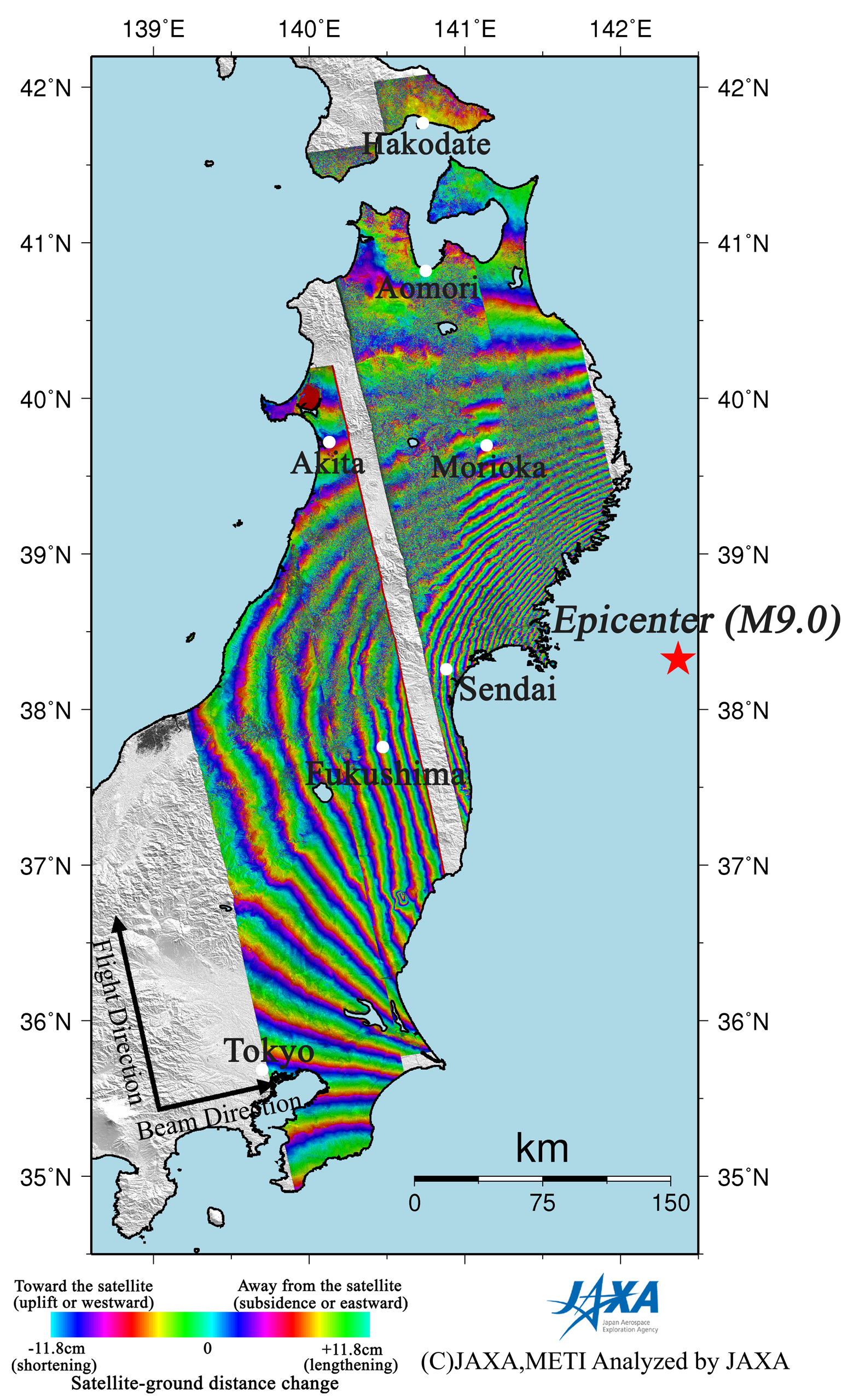Image Library
ALOS/PALSAR Observation Results of the Magnitude-9.0 Earthquake off the Pacific coast of Tohoku-Kanto District in Japan in 2011 (3)
On March 11, 2011 (UTC), a magnitude 9.0 huge earthquake occurred off the Pacific coast of Tohoku-Kanto district of Japan (38.32°N, 142.37°E, 32 km in depth; hypocenter information from USGS Web site), accompanied by a massive tsunami. The earthquake and tsunami caused severe damage in many cities, and more than 20 thousand people were killed and lost their homes. The Japan Aerospace Exploration Agency (JAXA) has performed emergency observations since the occurrence of the earthquake, using the Phased Array type L-band Synthetic Aperture Radar (PALSAR) installed on the Advanced Land Observing Satellite (ALOS, "Daichi"). In this report, we conduct differential interferometric SAR (DInSAR) processing to detect crustal deformation associated with the earthquake using PALSAR data acquired before and after the earthquake.
The blue and light-blue rectangles indicate the observation area shown in Fig. 2. The red star represents the epicenter of this earthquake.JAXA plans to continue ALOS observations of the afflicted area.



